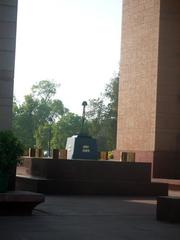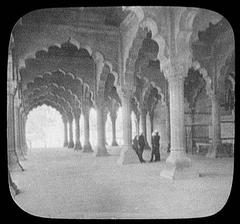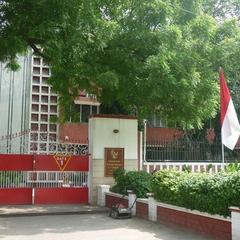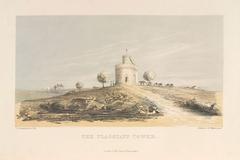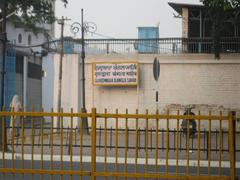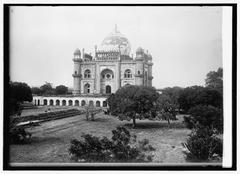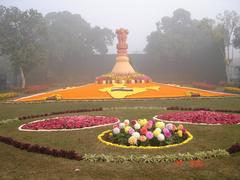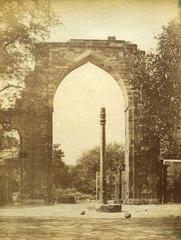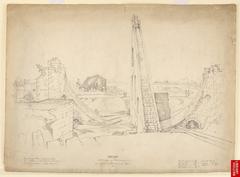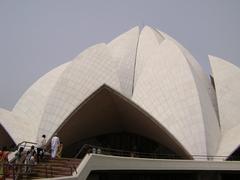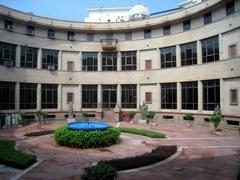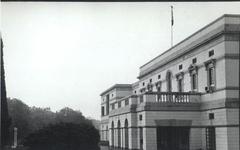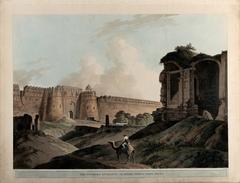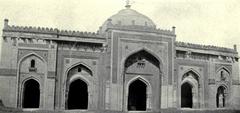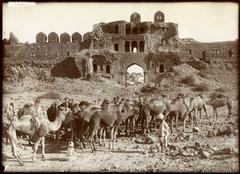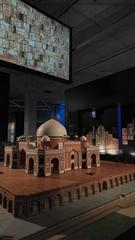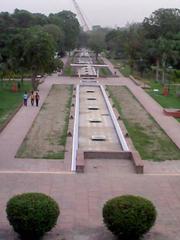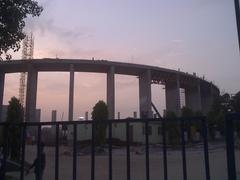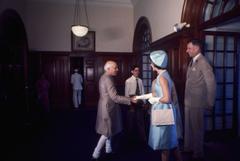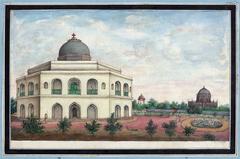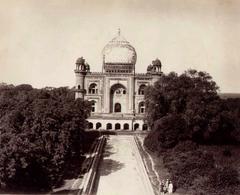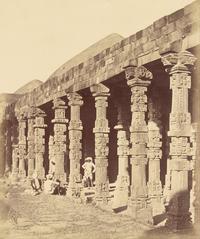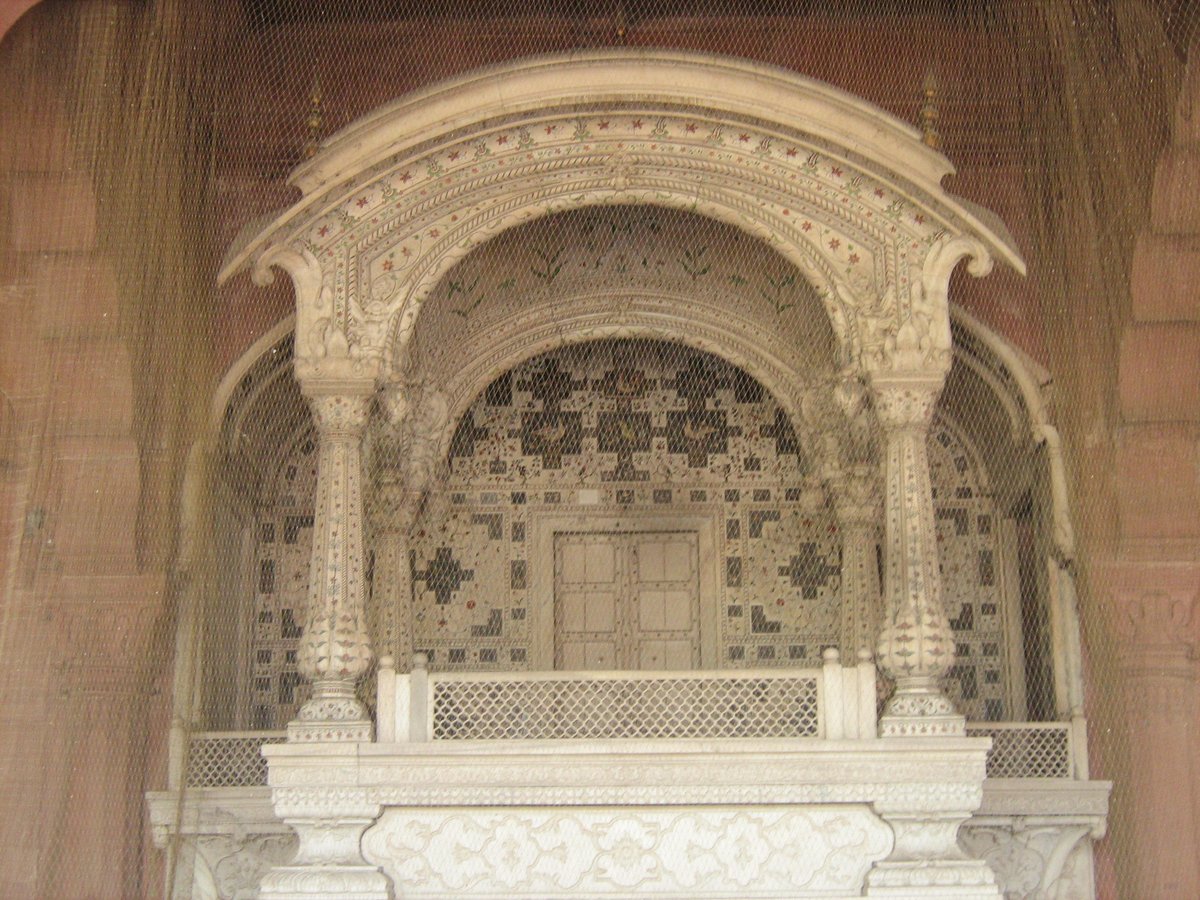
Visiting Diwan-i-Aam, New Delhi: Hours, Tickets, and Tips
Date: 24/07/2024
Introduction
The Diwan-i-Aam, or Hall of Public Audience, is an integral part of the Red Fort complex in New Delhi, India. Constructed during the reign of Mughal Emperor Shah Jahan between 1638 and 1648, this architectural marvel served as a venue where the emperor addressed the public, heard grievances, and dispensed justice (Wikipedia). The Diwan-i-Aam is renowned for its architectural grandeur, blending Persian, Timurid, and Indian styles, and holds significant historical value as a symbol of the Mughal Empire’s commitment to justice and governance. Today, the hall stands as a testament to the Mughal Empire’s administrative efficiency and cultural sophistication, drawing visitors from around the world who come to marvel at its intricate carvings and historical significance (Wanderwish).
Table of Contents
- Exploring Diwan-i-Aam
Exploring Diwan-i-Aam
Historical Background
Origins and Construction
The Diwan-i-Aam, also known as the Hall of Public Audience, is a significant historical structure located within the Red Fort complex in New Delhi. Constructed during the reign of Mughal Emperor Shah Jahan, who ruled from 1628 to 1658, the Red Fort itself was commissioned by Shah Jahan in 1638 and completed in 1648. The Diwan-i-Aam served as the venue where the emperor would address the general public, listen to their grievances, and dispense justice.
The construction of the Diwan-i-Aam is a testament to the grandeur and sophistication of Mughal architecture. Built primarily from red sandstone, the hall features a series of arches and columns that create a sense of openness and accessibility. The central throne, known as the jharokha, is where the emperor would sit, elevated above the audience to signify his supreme authority.
Architectural Significance
The Diwan-i-Aam is an exemplary piece of Mughal architecture, reflecting the blend of Persian, Timurid, and Indian architectural styles. The hall is rectangular, measuring approximately 100 feet by 60 feet. The roof is supported by a series of intricately carved sandstone columns, each adorned with floral and geometric patterns. The arches are cusped, a characteristic feature of Mughal architecture, adding to the aesthetic appeal of the structure.
One of the most striking features of the Diwan-i-Aam is the marble canopy or baldachin, under which the emperor’s throne was placed. This canopy is intricately carved and inlaid with semi-precious stones, showcasing the exquisite craftsmanship of Mughal artisans. The throne itself was made of white marble, further enhancing the regal atmosphere of the hall.
Historical Events and Usage
The Diwan-i-Aam was not merely a ceremonial hall; it played a crucial role in the administrative and judicial functions of the Mughal Empire. It was here that the emperor would hold court, known as the jharokha darshan, where he would appear before his subjects every morning. This practice was not only a means of dispensing justice but also a way to reinforce the emperor’s divine right to rule.
One of the most notable events that took place in the Diwan-i-Aam was the trial of Dara Shikoh, the eldest son of Shah Jahan. Dara Shikoh was accused of apostasy and heresy by his brother Aurangzeb, who eventually succeeded Shah Jahan as emperor. The trial, held in the Diwan-i-Aam, resulted in Dara Shikoh’s execution, marking a significant turning point in Mughal history.
Cultural and Social Impact
The Diwan-i-Aam was more than just a hall for public audience; it was a symbol of the Mughal Empire’s commitment to justice and governance. The hall served as a platform for the emperor to interact directly with his subjects, thereby fostering a sense of accountability and transparency. This practice was in stark contrast to the autocratic rule prevalent in many other contemporary empires.
The architectural design of the Diwan-i-Aam also reflects the Mughal emphasis on creating spaces that were both functional and aesthetically pleasing. The open layout of the hall allowed for large gatherings, while the intricate carvings and decorations showcased the empire’s artistic achievements. The Diwan-i-Aam thus stands as a testament to the Mughal Empire’s ability to blend form and function in its architectural endeavors.
Preservation and Modern-Day Relevance
Today, the Diwan-i-Aam is a UNESCO World Heritage Site, recognized for its historical and architectural significance. Efforts have been made to preserve the structure and maintain its original grandeur. The hall is a popular tourist attraction, drawing visitors from around the world who come to marvel at its architectural beauty and learn about its historical importance.
The Diwan-i-Aam continues to hold relevance in modern times as a symbol of justice and governance. It serves as a reminder of the Mughal Empire’s commitment to public welfare and the rule of law. The hall’s preservation also underscores the importance of safeguarding cultural heritage for future generations.
Accessibility and Visitor Information
Visiting Hours
The Red Fort complex, including the Diwan-i-Aam, is open to visitors from 9:30 AM to 4:30 PM, except on Mondays when it is closed. The nearest metro station is Chandni Chowk, which is a short walk from the fort.
Ticket Prices
Tickets can be purchased at the entrance or online. Indian citizens pay ₹35, while foreign tourists are charged ₹500. Children under the age of 15 can enter free of charge. Discounts are available for cashless payments (TripSavvy).
Travel Tips
- Arrive early to avoid long queues and crowds.
- Wear comfortable footwear as there is a lot of walking involved.
- Carry a water bottle, especially during the hot summer months.
- Photography is allowed, so bring a camera to capture the stunning architecture.
- Be respectful of the historical site and follow all guidelines provided by the authorities.
Nearby Attractions
While visiting the Diwan-i-Aam, make sure to explore other attractions within the Red Fort complex, such as the Diwan-i-Khas (Hall of Private Audience), the Rang Mahal (Palace of Colors), and the Mumtaz Mahal. Additionally, the bustling markets of Chandni Chowk and the Jama Masjid, one of the largest mosques in India, are located nearby and are worth a visit.
Special Events and Guided Tours
The Red Fort complex often hosts special events, including sound and light shows that narrate the history of the fort and its significance. Guided tours are available and are highly recommended for those who wish to gain deeper insights into the history and architectural features of the Diwan-i-Aam and other structures within the fort.
Frequently Asked Questions (FAQ)
What are the visiting hours for Diwan-i-Aam?
The Red Fort complex, where Diwan-i-Aam is located, is open from 9:30 AM to 4:30 PM, except on Mondays.
How much are tickets for Diwan-i-Aam?
Indian citizens pay ₹35, while foreign tourists are charged ₹500. Children under the age of 15 can enter free of charge. Discounts are available for cashless payments.
Is Diwan-i-Aam accessible for people with disabilities?
The Red Fort complex is partially accessible for people with disabilities. It is advisable to check with the authorities for specific accessibility features and assistance.
Are there guided tours available?
Yes, guided tours are available and provide detailed information about the history, architecture, and cultural significance of Diwan-i-Aam.
Conclusion
In conclusion, the Diwan-i-Aam stands as a monumental testament to the architectural brilliance and administrative acumen of the Mughal Empire. Its historical significance, coupled with its architectural grandeur, makes it a must-visit for anyone interested in India’s rich cultural heritage. Visiting the Diwan-i-Aam provides an enriching experience, deepening one’s understanding of India’s cultural heritage and the architectural brilliance of the Mughal period. Preservation efforts ensure that this iconic monument remains a symbol of India’s historical and cultural legacy for future generations to appreciate (TripSavvy).



